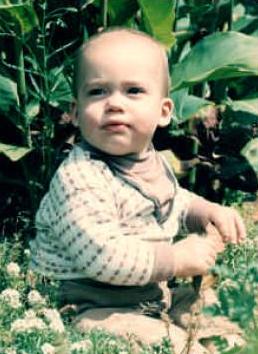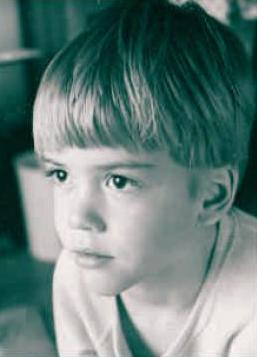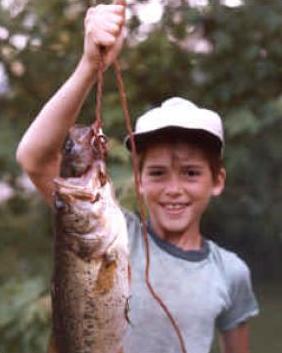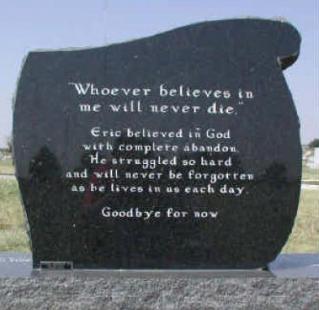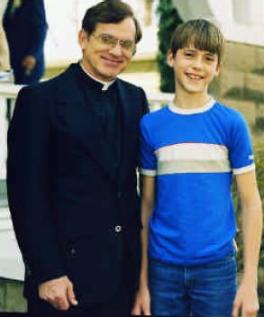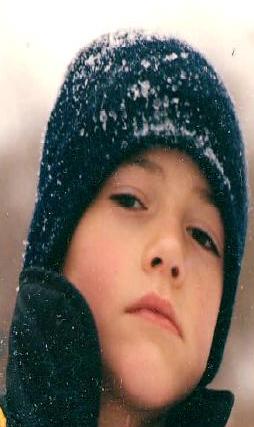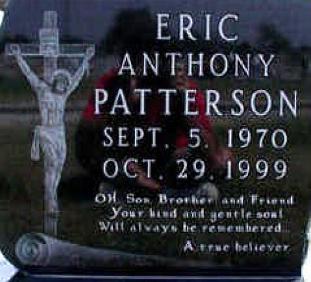Driven from the Flock Within the sociological listing of family groups, one group is never mentioned, a family created by tragic bonds. Our new family is not linked through blood, but through anguish and betrayal. What we all have in common is that family members were sexually abused by Catholic priests. This abuse has turned our worlds upside down, made us question our basic beliefs, and inflicted agonizing mental, spiritual, and physical anguish. We have reunions, of sorts, via e-mail, letters, and telephone. Collectively, we try to support each other, cry with each other, and somehow struggle to keep ongoing. We are the families driven from the flock. Our loved ones had the misfortune of being harmed by abusive priests. We ask ourselves daily, “How could this happen?” Some of us have lost our children to suicide by various means: gunshot, drug overdose, hanging, alcohol poisoning, car fumes, unexplainable one-car accidents. Others watch their children (many of them now adults) struggle with the after-effects of sexual abuse. Their constant fear is that someday their children too may share the same fate. As we share our stories, many common threads emerge. The priest was charismatic, dynamic, and loved by the parish. Upon his removal, even when he would plead guilty, many parishioners and fellow priests would rally around him by denying his guilt,sending cards and letters of support, and failing to give moral support to the victim and his/her family. Their minds cannot reconcile the public view of the priest with the private view of his abusive behavior. Few of us are able to set foot in a Catholic church, or any church for that matter, since we became members of this club—victims and families affected by sexual abuse. We are told such things as “Forgive” and “Go on with life.” “Get over it.” “Remember that he did a lot of good during his ministry.” “That was so long ago; why bring it up now?” Welcome to our world, just a few insights into what clergy sexual abuse does to families. One mother wrote to a bishop seeking help for her son who was exhibiting classic signs of sexual abuse. After hearing rumors that their former priest had been removed for sexual abuse, she wanted to know if the rumors were true.She was not seeking damages or revenge, but truth. Her reply from the bishop was basically that he was sorry for the family’s troubles but that they encourage all their priests to interact with young people. He had completely avoided her question. Five years later, her son committed suicide by gas fumes from his car. A boy who started life wanting to be a priest died at 21 as an atheist. The ugly truth is that the priest in question had abused many times over his thirty years in the diocese and had finally been removed from ministry two years before the mother wrote her letter. Imagine her feelings of grief, rage, and betrayal. Another family struggles daily with fear for their son’s mental and physical well-being. He was courageous enough to file charges against his abuser. The priest pleaded guilty, yet the parish stood behind the priest. Instead of this teenager being praised for his courage, he was removed from his parish youth position and his parents removed from their parish positions. Not one priest stepped forward to minister to the family. After two years of being shunned by the church community, the family moved to another state. After their son’s subsequent attempt at suicide by hanging, the father held his son in his arms for hours, loving and soothing him, and inside raging and weeping. The young man’s mother constantly wonders how this happened to their family—after years of attending daily Mass, she feels the void, the emptiness of losing her spiritual compass. Her family no longer attends the Catholic Church. Her husband grieves the loss of his son’s sense of security, the need to relocate from a parish his ancestors helped develop, and his anger at the callousness of the Church hierarchy. Another mother tells her son’s story whenever she can. He, too, at 16, was brave enough to press charges against his priest for abuse. Although the priest pled guilty, both he and his family were abandoned by their church community and treated cruelly by the diocesan attorneys. Her son received a small settlement, but what he really needed was emotional support from the church community. At 20, he died by hanging. His mother still hasn’t cashed her settlement check from the diocese—after all, how far can ten dollars go? A mother, devastated, discovers her daughter’s suicide attempts and cuttings were the result of her having been raped several years before by their parish priest. By a strange coincidence, this priest was transferred from their parish just as her daughter was being released from the psychiatric unit, shortly after her sexual abuse. For three years she kept her abuse a secret as her family worried about her and prayed for her. Her family cannot look to the Church for solace as they feel a sense of betrayal and rage. Another family mourns the deaths by suicide of their son and of their nephew. For two years, the mother, who had raised her nephew, agonized over what she had done wrong as a mother to have two suicides in her family. What she didn’t know was that their pastor had been removed years earlier for sexual abuse allegations, not stress, as the parish bulletin had stated. Both the bishop and vicar general of her diocese cited “stress” as the cause of this priest’s removal. Years later, she read of sexual abuse allegations extending over many years against this priest. Too late, she found out that both her son and her nephew had been among his many victims. No one can explain to her why the diocese could not be truthful. No one can take away her heartache and physical pain. One woman copes daily with discovering herbrother’s body after his suicide. At 23, he shot him-self, hoping to find peace after years of struggling from the pain of his sexual abuse. His abuser wasn’t his par-ish priest, but a priest active in CYO and serving an-other parish. When her brother was being treated in a psychiatric unit, he revealed his repeated abuse by thispriest. Now his sister daily re-lives the trauma of find-ing his body whenever she has to enter a darkenedroom and turn on the light. Another family stood by helplessly as their beautiful daughter attempted suicide as a teenager and again as a young adult. Now they have to face the Church’s treatment of their daughter as she seeks justice and accountability. Because she was a pre-schooler at the time of her abuse, the diocese does not find her story plausible. She was even told that maybe she had been molested by a family member and was confused. She is African-American; her molester was a white priest. Out of love for her grandmother, she kept all this pain to herself, thinking that it would hurt her grandmother too much to find out that while the grandmother was cooking for the convent sisters, she was being assaulted in a nearby room. After threatening her, the priest told her grandmother that the girl had wandered off, causing the grandmother to scold her in front of this abuser-priest. Now her parents struggle to contain their anger and frustration as they support their daughter’s fight for justice. Their faith life has been shattered also. Another member of our family struggles alone, not yet revealing to her birth family that she had been ritually abused for years by a priest. Despite suffering from flashbacks, enduring bouts of depression, searching for competent therapists, and defending the necessity of the offending priest’s religious order to continue financing her therapy, she has somehow found the strength to be a demanding yet caring teacher. Outside the classroom, however, she is locked into the hellish cycle of suffering that sexual trauma brings. Often she has felt completely hopeless, trying to escape the pain with suicidal attempts. Several members of our family are dealing with the realization that their son’s or daughter’s suicide may have had an unsuspected cause—clergy sexual abuse. As perpetrators are exposed in the media, some parents are horrified to discover that among the group are priests who had been close family friends, friends with whom they trusted their children implicitly. Old pains are dredged up coupled with the new pains of betrayal. Although these stories may sound unbelievable, they are factual. How do I know? I have communicated with members of these families during the past two years. My family has become part of this bigger, suffering family because we, too, lost a son to suicide at 29, several months after he revealed his sexual abuse at the age of twelve by our parish priest. None of us want to be in this new family, but now that we are, we love and support each other, desiring to stop this evil in the Church. Although we feel betrayed by the perpetrators, our greatest anger is directed at Church officials who lied or kept the truth from parishioners. A bishop simply saying he is sorry or that he got “bad medical advice” gives us no comfort. Our new family is finding a voice, one which demands to be heard. With all our hearts and souls, we pray that no one else has to be welcomed into our midst. Our Lord has never failed us; the Church has. GOD bless you for taking the time to read this article.
The Wichita Eagle, August 20, 2000 EX-AREA PRIEST ACCUSED OF SEXUAL ABUSE… SOME OF
THE ALLEGED VICTIMS, NOW ADULTS, SAY THEY ARE STRUGGLING TO COPE. ONE Bishop Eugene Gerber confirmed that the diocese had received abuse reports involving the Rev. Robert K. Larson. The priest was ultimately removed from the pulpit in 1988 and eventually stripped of his duties and title… A native of Iron Mountain, Mich., Larson was ordained March 22, 1958, and held a number of administrative positions within the Wichita Diocese: diocesan director of the Catholic Youth Organization, public information officer, director of Catholic Charities and Catholic Center for the Aging. [Note from BishopAccountability.org: See the full text of this Wichita Eagle article.] Eric Anthony Patterson: May you rest in peace |
Any original material on these pages is copyright © BishopAccountability.org 2004. Reproduce freely with attribution.
